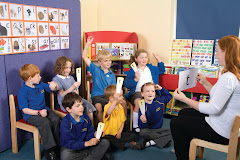Saturday 10 December 2011
Two thirds of children fail new phonics reading test
So what does this tell us when we consider the large number of children who continue to need extra support with their reading and end up leaving school without the literacy skills they need on entering the world of work?
The simple truth is that, despite the big government push for all schools to teach phonics, only a minority (about 27% according to the DfE) appear to be teaching it systematically. The majority of schools, although using phonics, continue to use it as part of a mix of methods alongside picture clues and memorising spellings.
Until this changes, and teachers put faith in teaching phonics first and fast, without confusing children by mixing it in with distractions, reading standards will not be improved.
More information can be found on the DfE website here
Tuesday 17 May 2011
abc PocketPhonics app



I had the opportunity recently to review a phonics product called PocketPhonics, and I have to say I was impressed.
PocketPhonics is an educational app that works with both the iPhone and iPad and is designed to teach children:
- letter sounds
- how to write letters
- how to blend letter sounds together to read simple words
s, a, t, p, i, n
m, d, g, o, c, k
ck, e, u, r, h, b
f, ff, l, ll, ss, j
v, w, x, y, z, zz
qu, ch, sh, th, th, ng
ai, ee, igh, oa, oo, oo
ar, or, ur, ow, oi, ear
air, ure, er, ou, ue, ay
ou, wh, ir, ph, ie, ew
ea, aw, oe, au







